NCOAE Blog
Trending: 4 Best Practices in Outdoor and Adventure-based Experiential Education
Outdoor EducationA little more than three decades ago, two educators and researchers from Canada partnered with the Association for Experiential Education (AEE) on a groundbreaking book titled Safety Practices in Adventure Programming.
Simon Priest, Ph.D., and Tim Dixon, M.Ed., regarded at the time as among only a handful of leading experts in outdoor adventure education and leadership, penned what some argue was the first widely-published best practices for the outdoor education and adventure programming industry.
Known as the Red Book, due to its bright red cover, their work coincided with AEE’s foray into accreditation, inspiring outdoor education program administrators across the globe to adopt common approaches to the safety and well-being of their clients and staff while facilitating adventure-based programs.
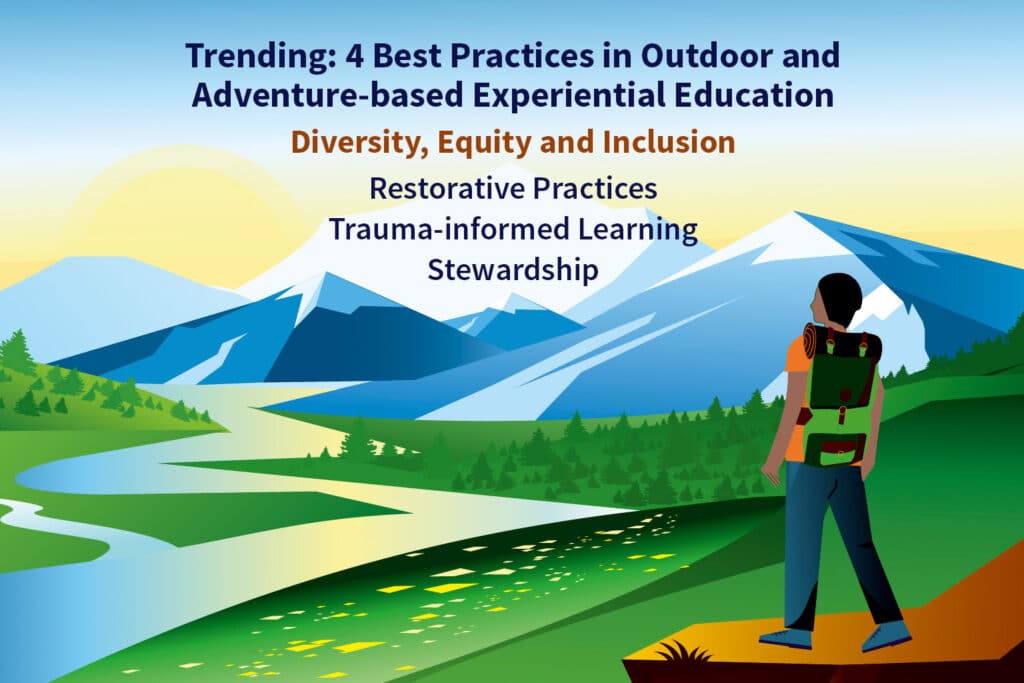
And while it likely isn’t fair to suggest that best practices didn’t exist within our sector of the outdoor industry before Priest and Dixon’s Red Book, the publication of that forward-looking guidance saw the rapid adoption of such practices for our sector like no other. Fast-forward 33 years, and we find most all outdoor education or adventure-based programming operations pay close attention to best practices in the realm of safety and risk management.
In today’s post, I’m pleased to call attention to four areas with associated best practices for which all outdoor educators and adventure-based organizations should be aware. After hearing from college and university outdoor program managers, organizational leaders, and by performing research of our own, four themes rise to the top as trends and best practices in outdoor education and adventure programming to follow over the next year: (more…)
Opinion: There’s Nothing “Basic” About an EMT
Emergency MedicineIt’s been more than a decade since the National Registry of Emergency Medical Technicians (NREMT) stopped using the certification designations EMT-B and EMT-Basic.
The change from EMT-B to EMT was not just in title. It was accompanied by an expanded set of knowledge and skill expectations for emergency medical technicians (EMTs). There is nothing “basic” about what an EMT learns or the skills he or she can perform. And they’re certainly not “Ambulance Drivers.”
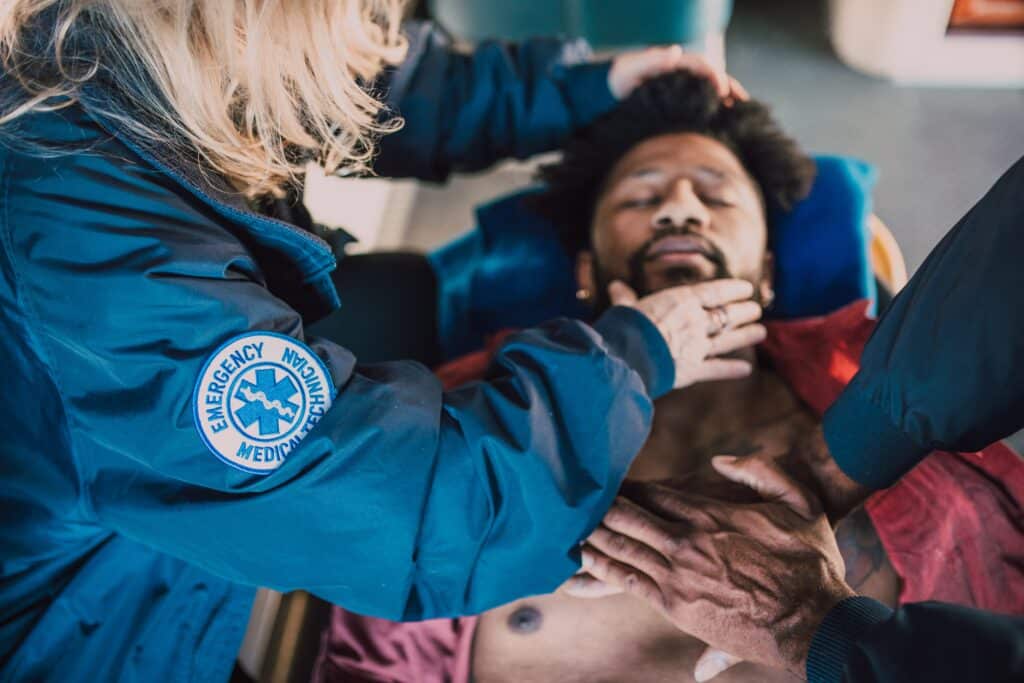
Most states have made the transition to the new title, but many emergency medical service (EMS) providers continue to refer to some EMTs as “Basics.” Maybe it’s out of ignorance, or just an antiquated habit, but we need that to stop. It’s much more than just an inaccurate designation — it’s misleading to the public and gives the wrong impression regarding care and capabilities.
Looking Back at EMT Designations
The early terminology came from a haphazard system of state-by-state naming conventions. The NREMT itself started out with an “EMT-Ambulance” or “EMT-A,” later adding an “EMT-Non-Ambulance” designation. As a result of this confusing (more…)
What Outdoor Industry Pros Recommend You Keep in Your First-Aid Kit
Wilderness MedicineHaving a first aid kit handy is always a good idea, but what should it contain? The answer to this question really depends on what you plan to be doing. There are different considerations for a kit that you carry in your car versus one that you grab up for a mountain bike ride or take with you on an overnight or multi-day backcountry expedition.
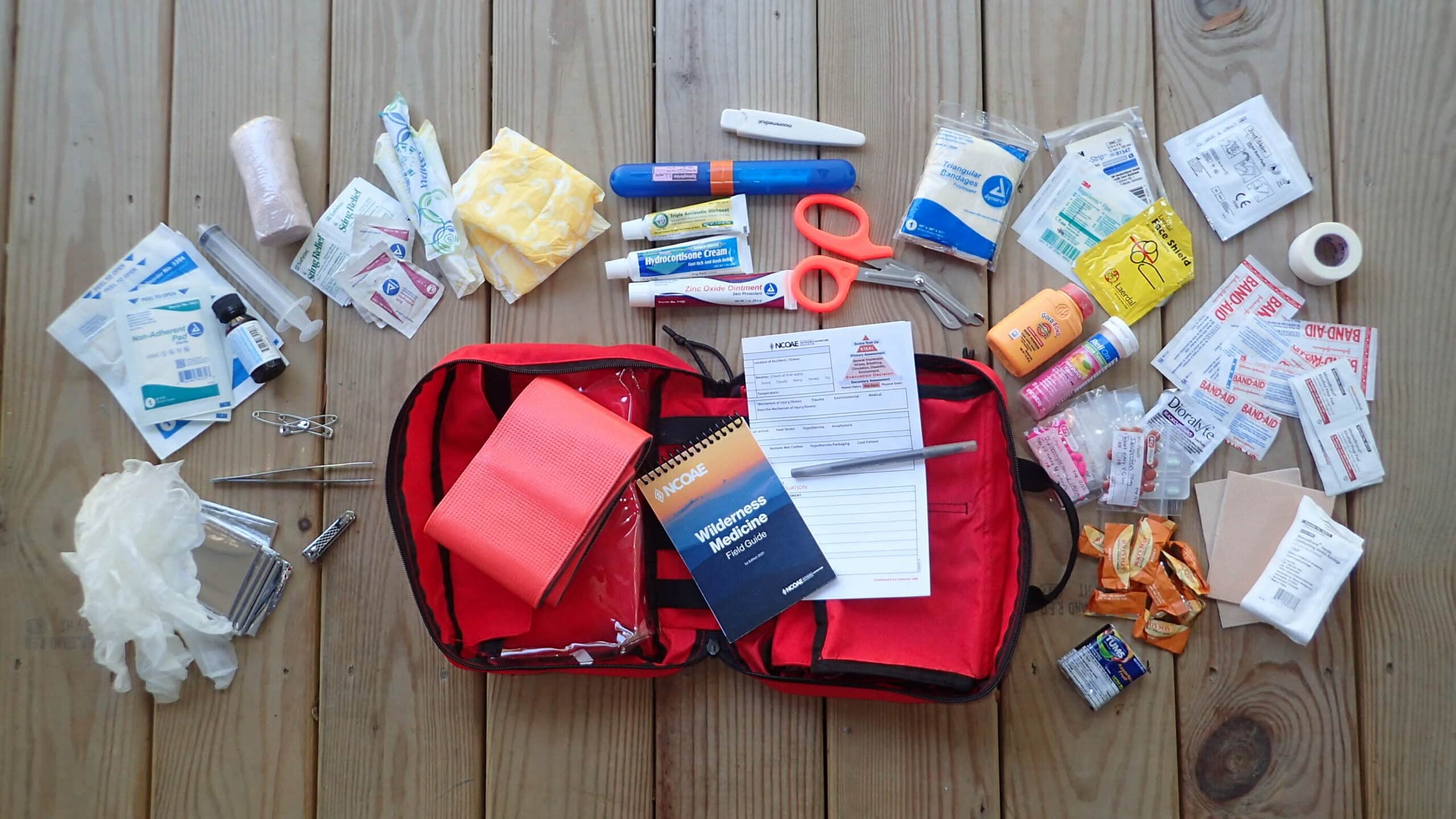
Of course, you could purchase pre-stocked first-aid kits for a variety of purposes. Retailers and companies like REI, Adventure Medical Kits, and even Amazon and Target all sell first aid kits that may be right for your purposes. These can be convenient, and many are vacuum sealed to save space. However, they can be expensive and may contain less useful items for your purposes.
Putting together your own first aid kit lets you decide how many and what kinds of things you want. It also gets you thinking about what you’ll have on hand should a backcountry emergency occur.
Pro Tip: Make sure your backcountry first aid kit is waterproofed and check it regularly to make sure things haven’t been damaged or have expired.
Here are some things to consider when creating your own backcountry first aid kit:
What injuries/situations are likely to occur? (more…)
Let’s Add Humble to the 5 ‘Umbles’ of Hypothermia
Risk ManagementHypothermia is deadly. There, I said it! This potentially dangerous drop in body temperature is commonly defined as a core body temperature below 95 degrees Fahrenheit (35 degrees Celsius) after dropping from a healthy temperature of about 98.6 degrees Fahrenheit or 37 degrees Celsius.
The slightest variance from the “normal” range can disrupt the body’s ideal operating conditions, known as homeostasis. The negative impact of hypothermia on homeostasis is dramatic and therefore should not be underestimated. Hypothermic progression follows a path, moving first more slowly, then more rapidly toward non-movement and when properly treated, onto death.
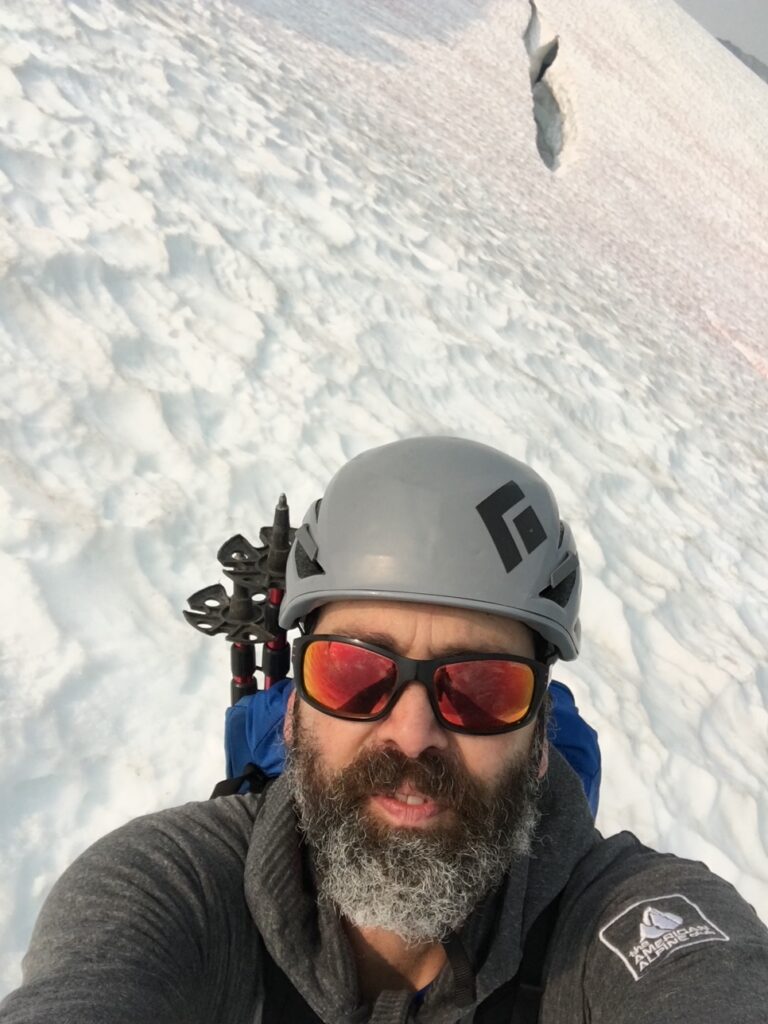
Movement is life. Living things grow, evolve, learn and work to improve their circumstances. Non-living things hold fast to current circumstances unless acted upon by an outside force. As we’ve all experience, movement generates warmth, and this case, it combats hypothermia. A creature that has the appropriate amounts of items necessary for movement will generally maintain a body temperature conducive for life.
These items required for movement include nutrients, health, fitness, clothing, and sometimes technical outdoor tools such as an ice axe and crampons. A breakdown of these items leads to decreased movement and reduced temperature. In this post, we will look at the hypothermic process using the five umbles: (more…)
Hands-on Training is the Key to a Career in the Outdoor Industry
Outdoor IndustryFor anyone interested in a career in the outdoor education, adventure programming, and guiding sectors of the outdoor industry, there are many trails to reach your destination. Among these are university recreation programs, internships, seasonal employment and more.
Not all pathways in this wide and diverse industry necessarily require a recreation-specific degree. However, an associate’s or bachelor’s degree offers job seekers a leg up when it comes to qualifying for an administrative position, as well as positions in environmental education or academia.
And while a college degree is helpful and even required in some sectors of this great outdoor industry of ours, what this industry truly values most is hands-on experience. That experience — in combination with holding the relevant certifications — is the key to successful advancement in outdoor education and adventure programming employment.

Gaining real-world experience is essential, whether you’re pursuing a college degree or not. And one of the best ways to jump start your outdoor industry career is to find seasonal employment working in the field. Taking a part-time or summer job offers a great opportunity to start gaining the needed experience.
Types of Outdoor Industry Organization
Seasonal opportunities abound, including through the following types of organizations: (more…)
New Thinking about How to Handle Spinal Injuries in Remote Wilderness Settings
Wilderness Medicine TrainingBest practices for evaluating and transporting patients with potential spinal fractures or spinal cord injuries is a hot topic in emergency medicine. And it’s no wonder. All of us who work in the adventure programming and emergency medical services field fervently want to avoid causing or worsening a potentially catastrophic injury to someone’s spinal cord.
As such, and for many decades, EMS officials dogmatically insisted that “immobilizing” patients with potential spine injuries was the best protection from further harm. Protocol demanded rigid backboards, cervical collars, head blocks, and yards of tape and straps to prevent someone who is injured from moving. However, new research suggests this is not only ineffective, but quite likely harmful.
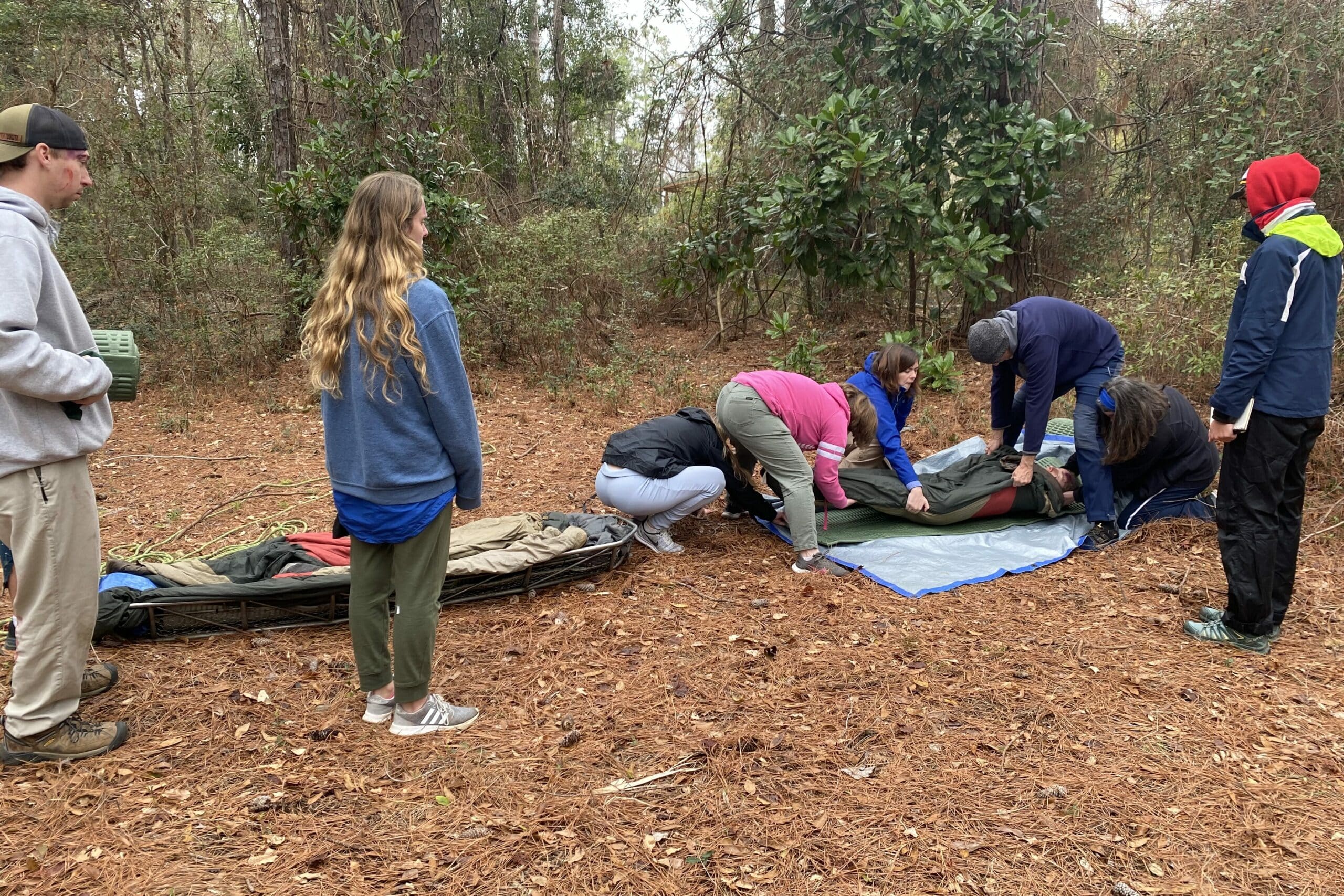
Immobilization Dismissed as the Tool of Choice for Patient Transport
Anyone suffering a spinal injury could have a spinal fracture. And that fracture could be unstable. So, if your client (i.e., patient in this case) moved even a little bit (like turning their head), that unstable spinal fracture could slide around and cause spinal cord injury. And that spinal cord injury could cause them to be paralyzed forever.
The Old School solution was to prevent them from moving on their own. Only let trained first responders (including outdoor educators, field instructors, and guides who are certified in wilderness medicine) lift/move the injured patient. Immobilize them to a rigid device — essentially a full-body splint — and get them out of the backcountry and to a hospital.
Upon what was this edict based? Essentially nothing. A few case reports that, on closer scrutiny, don’t indicate any (more…)
In the Outdoor Industry, Affordable Housing for Outdoor Educators Remains Elusive
Outdoor EducationOne of the major “perks” of working as a field instructor, guide, or senior staff in the outdoor education and adventure-based programming sector of the outdoor industry used to be an offer of free or low-cost housing. Today, that incentive is more elusive, both for employees at our peer organizations and the staff we hire here at The National Center for Outdoor & Adventure Education (NCOAE).
Affordable staff housing — or the lack thereof — tops the list of major financial issues facing those of us who oversee the experiential education programs we run at NCOAE. Our instructors and staff come from around the globe to teach and facilitate our outdoor adventure and education programs. And for us, it has always been important that when they arrive on campus, we attempt to make sure the stress of basic needs does not overshadow the joy of the work.

Carolina Beach, North Carolina, is the closest residential area to NCOAE headquarters, featuring rents that average $1,500 a month. That’s not outrageous if you’re earning $50,000 a year and you consider 30 percent of income for rent as the gold standard for conservative budget management.
But ours is a seasonal business, and part of the problem our sector of the outdoor industry faces is that our staffers don’t make 50 grand a year. In addition, most outdoor education facilities are located in beautiful areas near state and national parks, mountains, beaches, lakes, and other open recreational spaces. Obviously, real estate and rental accommodations are much more costly in such places.
Outdoor Educators Consistently Lack Affordable Housing Options
Fortunately, NCOAE is not located in an area where rent and income gaps are so disparate that staff must move to other locations to survive. However, at the end of the day we are (more…)
Gaining the Clinical Experience to Get into Med School: EMT Training and Direct Patient Care
EMT TrainingExperience is among the biggest hurdles you need to clear in order to enter any competitive profession. However, clearing this hurdle can be especially challenging for those entering the medical field because it’s unlikely you can get into medical school without some experience under your belt.
Unlike other professions, the field of medicine offers internship opportunities only upon graduation from medical school. So, the question for many high school and college students aspiring to become doctors is this: How do I get the patient care experience I need to get into medical school if I’m not a doctor?
Our solution? Perhaps the best clinical experience for pre-med can be obtained by training for and working as an emergency medical technician (EMT). As an EMT, you get diverse hands-on patient care experience in a fast-paced, high-intensity treatment environment while working closely with firefighters, police officers, doctors, and other emergency-response and medical professionals. And you gain exposure and experience with patients who have a variety of medical conditions in a broad range of emergency response scenarios.
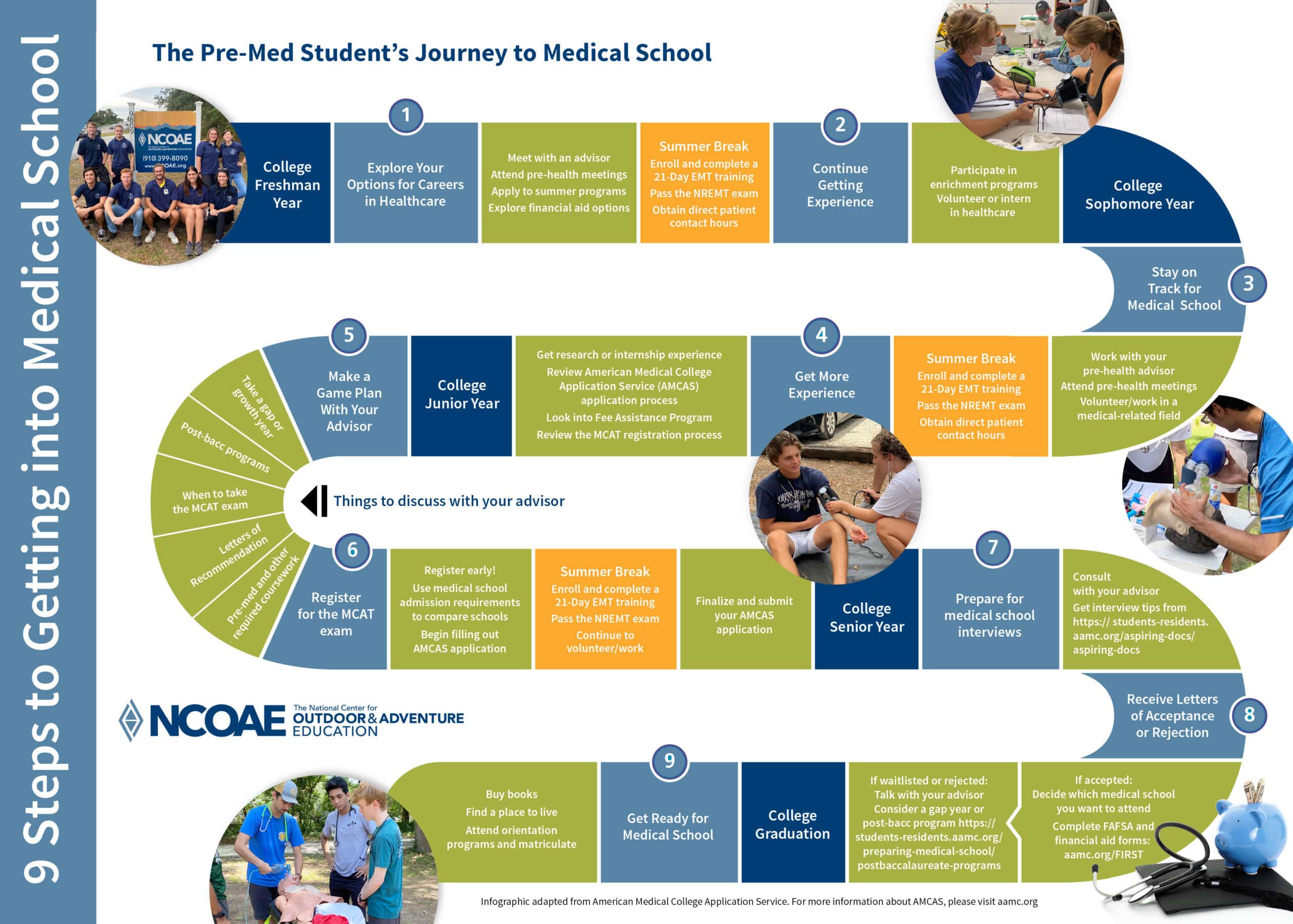
Discover efficient and effective paths to medical school, and ways to get the clinical experience needed to increase your chances of being accepted.
The Path to Medical School
According to the Association of American Medical Colleges (AAMC), the recommended approach to getting into medical school includes:
- Explore your medical career options.
- Get some experience.
- Stay on track for medical school.
- Get more experience and explore resources.
- Team up with your advisor to build a game plan.
- Register and prepare for the Medical College Admission Test (MCAT).
- Prepare for med school interviews.
- Receive letters of acceptance or rejection.
- Prepare for medical school.
Steps 2 and 4 call for gaining experience — hands-on patient care experience. The people who run medical schools are only looking for serious candidates — intelligent individuals who are passionate about the field. They seek those committed to completing a rigorous and prolonged education and training program.
They don’t want to fill their limited openings with candidates who are likely to drop out after their first encounter with a cadaver. Nor do they want to discover later that a (more…)
Meet the EMT Students: Colleen and Justin
EMT TrainingThere’s good reason why we precede our three-week Hybrid EMT course with the word “Intensive.”
And that’s because our 21-Day “Intensive” Hybrid EMT course enables students to satisfy eligibility requirements for the National Registry of Emergency Medical Technicians (NREMT) and North Carolina State EMT examinations in an expeditious manner. Our course includes 10 days of virtual, instructor-led training, followed by 11 days of hands-on, practical skills training.
Today in this post, we’re highlighting a couple of students who completed our EMT training and received their certifications. As you’ll see, neither of them rested on their laurels, instead immediately following their training with additional education. First up is Colleen Kenedy.
Meet Colleen Kenedy
The first student we’re highlighting is Colleen Kenedy, who completed our Hybrid EMT training course in December of 2021. She signed up for the program in order to gain hands-on medical experience in a short amount of time. The objective was to help her when she was accepted to Physician Assistant (PA) school. And Colleen did just that.
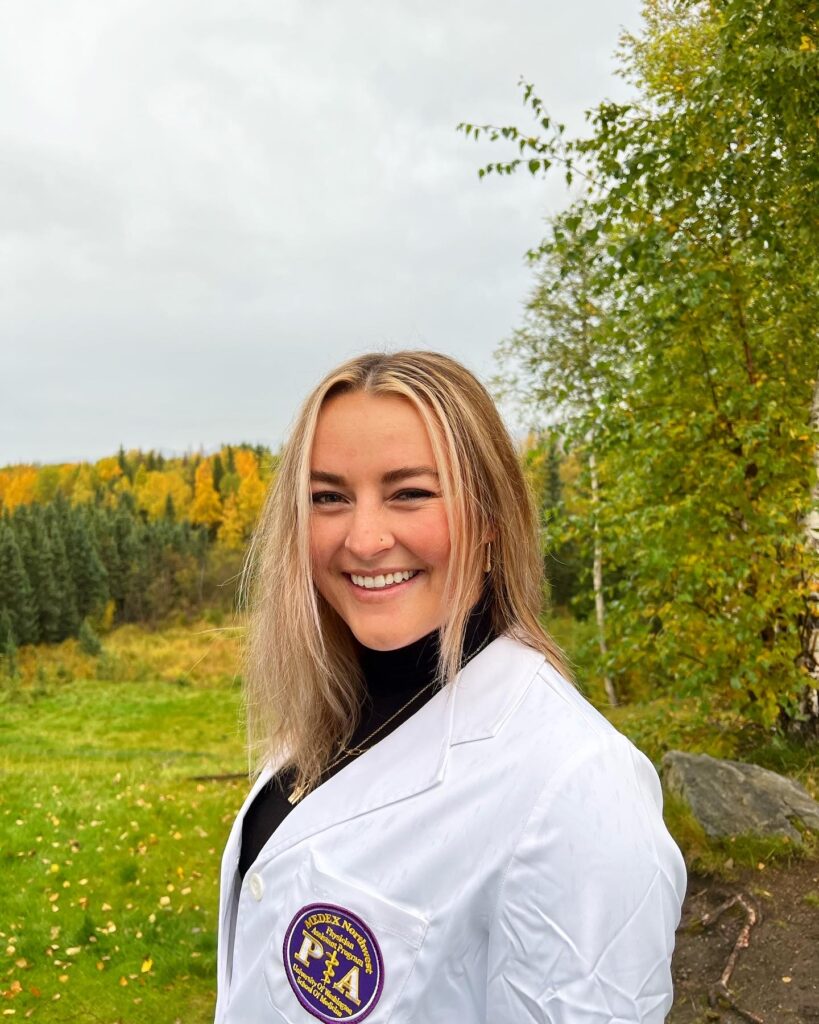
Shortly after completing her EMT course and passing her NREMT exam, Colleen was accepted for admissions to the PA Program at the University of Washington’s MEDEX Northwest campus in Anchorage, Alaska, where she is now completing her didactic year. She received her (more…)
Hybrid EMT Training Available in Oregon and North Carolina
EMT TrainingLong touted for offering hybrid EMT instruction in North Carolina, The National Center for Outdoor & Adventure Education (NCOAE) also offers Hybrid EMT training in Oregon.
This highly effective 21-day EMT training includes 10 days of virtual instruction delivered online, followed by 11 days of hands-on, practical training in Oregon’s Tygh Valley. The program offers an ideal format for college students, premed students, working professionals, and anyone else who appreciates the flexibility of learning in a fast-paced hybrid format.
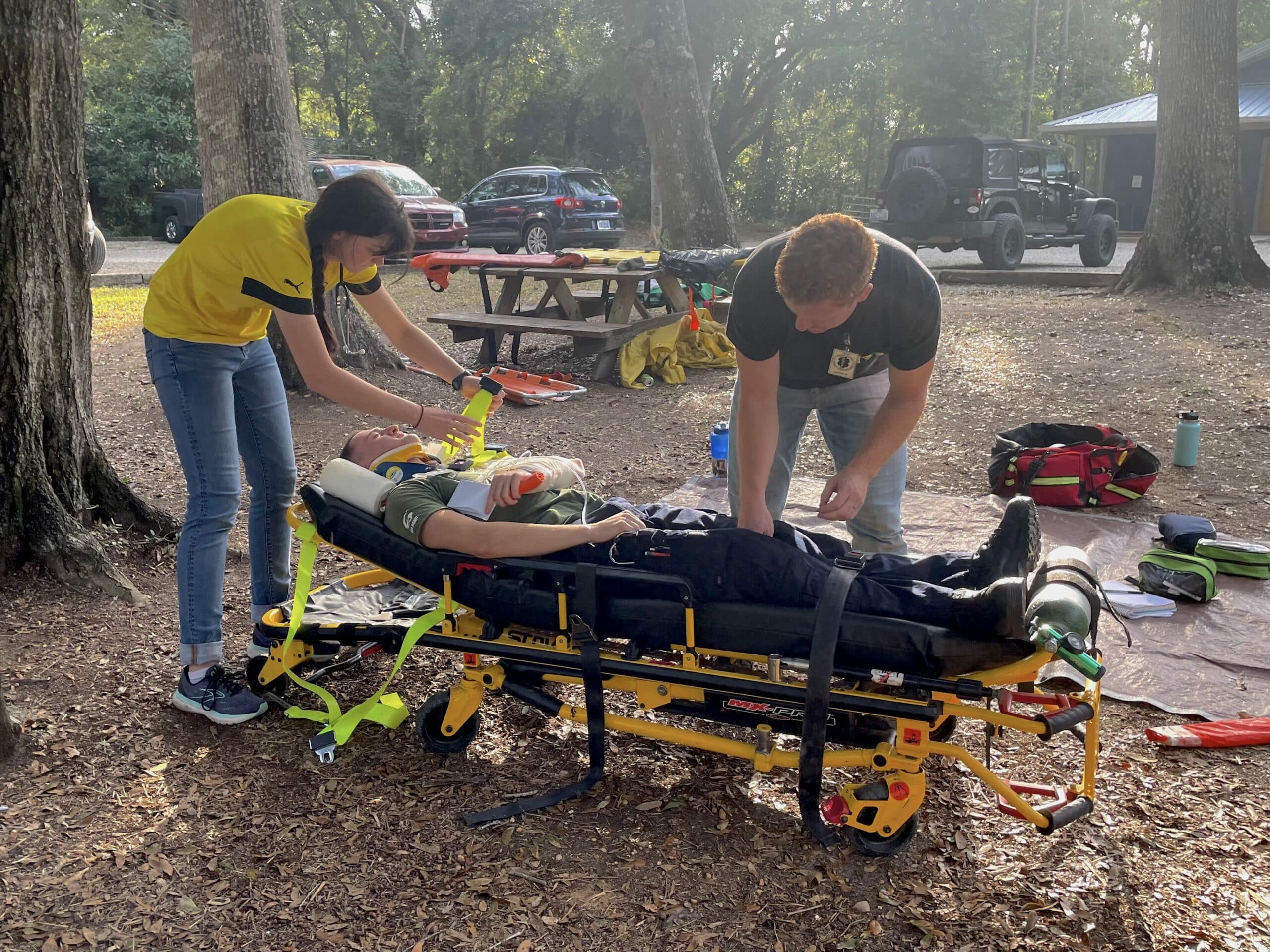
Whether you choose a hybrid EMT training program that features in-person, hands-on skills training in Oregon or North Carolina, your NCOAE training and experience will include the following:
Before your course begins: We’ll ask you to complete up to 30 hours of asynchronous web-based training using our online eLearning platform. The benefit to this approach is (more…)
8 Alternative Jobs to Pursue with an EMT Certification
EMT TrainingJust obtaining an Emergency Medical Technician (EMT) license opens a world of career possibilities both inside and out of the medical field. Sure, you have to put in the effort, but the opportunities are as diverse as our EMT students here at The National Center for Outdoor & Adventure Education (NCOAE).
Fact is, we receive applications from students from all walks and stages of life, who successfully complete our EMT training program and go on to use that EMT training for a variety of opportunities. Some become full- or part-time EMTs, others use this outstanding training and education as a steppingstone for medical or nursing school. And then there are the outdoor enthusiasts who use this EMT training to become Ski Patrollers or members of Search and Rescue crews, or to add an additional layer of medical expertise when guiding groups on mountaineering and backcountry expeditions.
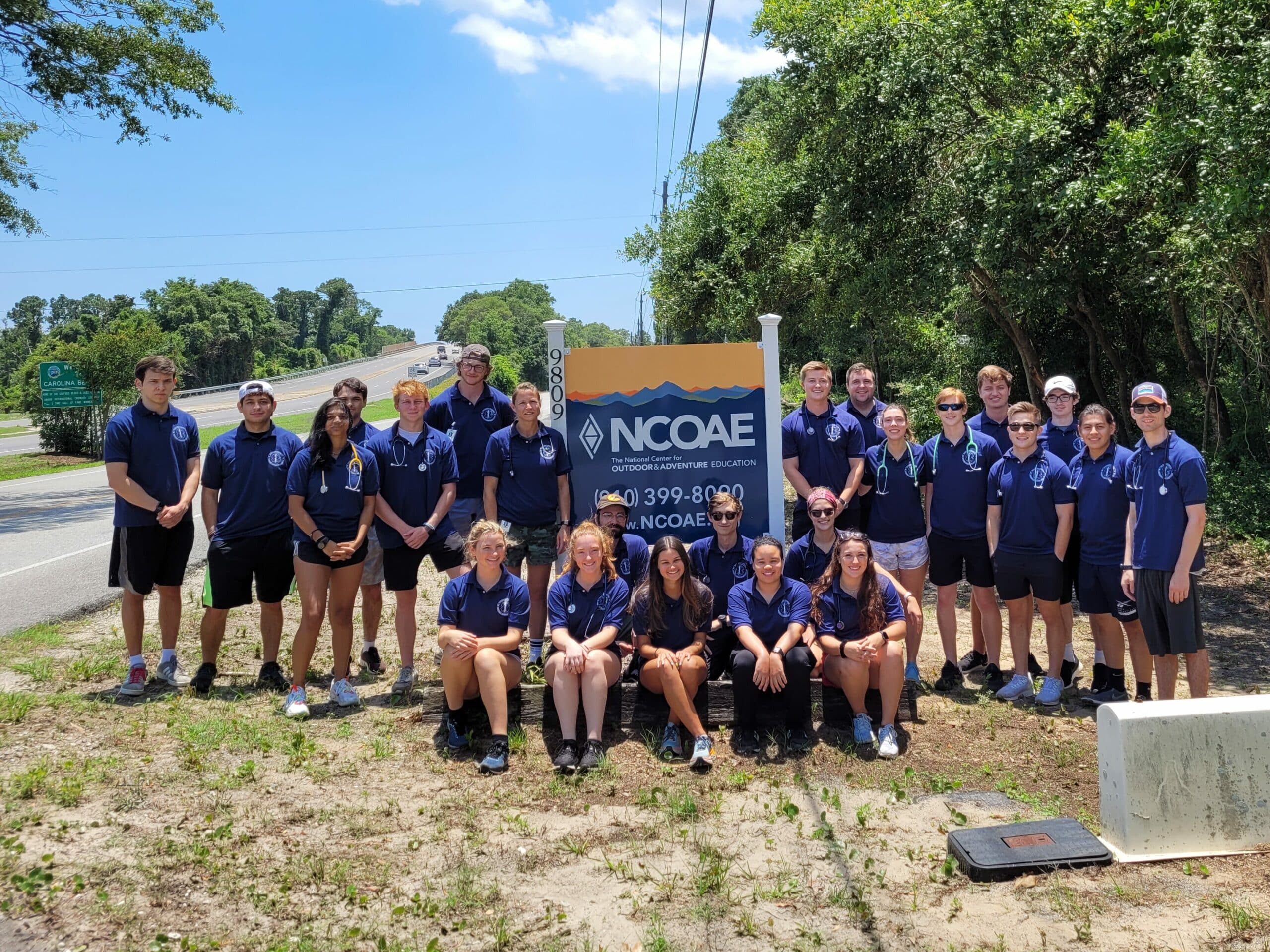
Maybe you’ve been an EMT for a while and are looking for a change, Or maybe you’re thinking about obtaining your EMT certification and then consider your options. While the most popular career trajectory for EMTs is to become a Paramedic, there are a number of jobs that you can obtain with just an EMT certification, keeping mind that some may require additional training.
Here are eight such opportunities: (more…)
Heat Illness: Symptoms, Prevention, and Treatment
Medical TrainingNobody likes to be hot and sweaty on the trail. But when things turn from being uncomfortable to becoming downright dangerous, it’s time for quick, on-the-spot emergency action.
Heat illness is a range of medical conditions that result from the body’s inability to cope with an elevated heat load. When that occurs, it is more commonly referred to as “heat strain.” And whether you’re inactive in a warm, humid environment or participating in strenuous physical activity in the fall or winter, you are at an increased risk of heat illness.
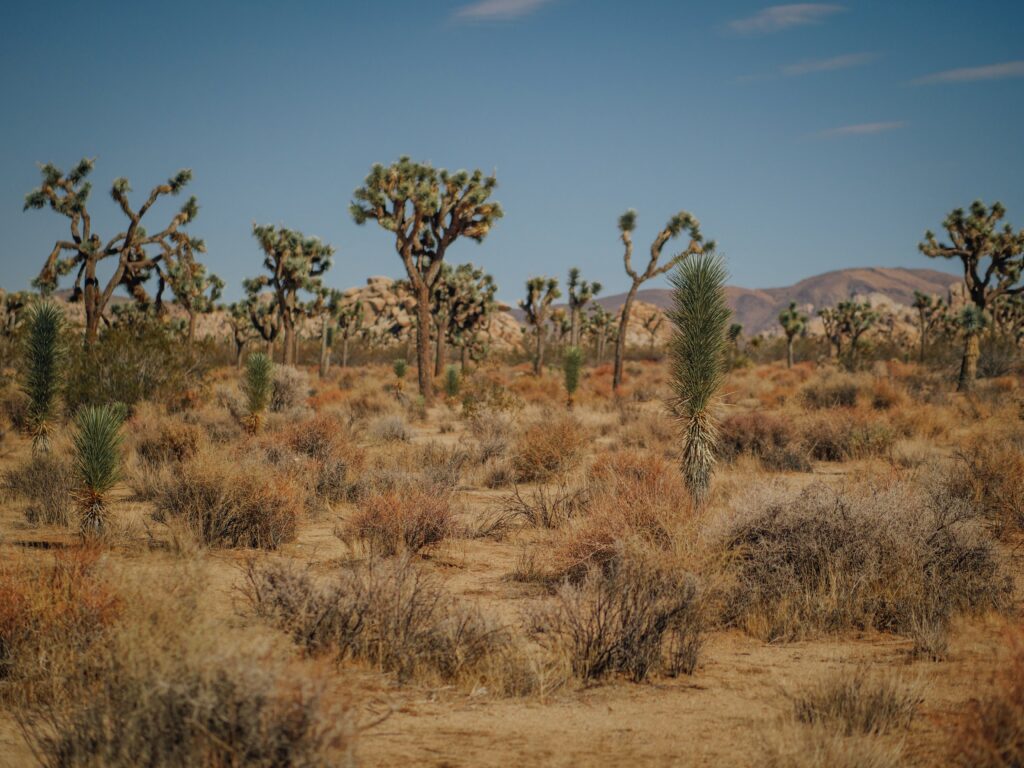
For people who engage in backcountry adventures, heat illness and heat strain are among the many potential health and safety risks. That’s why our instructors at The National Center for Outdoor Adventure Education (NCOAE) include it in our Wilderness Medicine courses. In this post, we bring you up to speed on the basics, including the symptoms to watch for, preventive measures, and treatments to cool an overheated body.
From Bad to Worse on the Heat Illness Spectrum
Heat illness, heat strain, and related injuries occur when the core body temperature becomes elevated, stressing or surpassing the body’s ability to cool itself. Like a nuclear power plant, the human body can suffer serious and potentially fatal damage when its core becomes overheated.
The severity of the condition is on a spectrum generally divided into the following three levels: (more…)
Adult Education Courses & Adventure Vacations
Adult CoursesTaking a well-deserved adult vacation offers joyful predictability. There’s time off to do what you want, visit places that you’ve maybe never seen before, and return home with some great photos of friends and family. Then, for most of us, it’s back to a predictable grind. By mid-week, we’re back to being the same employee or boss that we were when we packed up and headed out for vacation.
What The National Center for Outdoor & Adventure Education (NCOAE) offers outdoor enthusiasts — including adults who are curious about backcountry travel — is an alternative to your typical adult vacation. We prepare, set up, and guide life changing adventure-based adult education courses for anyone looking to learn new skills — or those sharpening existing skills in the outdoors, enabling them to return to daily life with new insights into leadership and how to protect our natural resources.
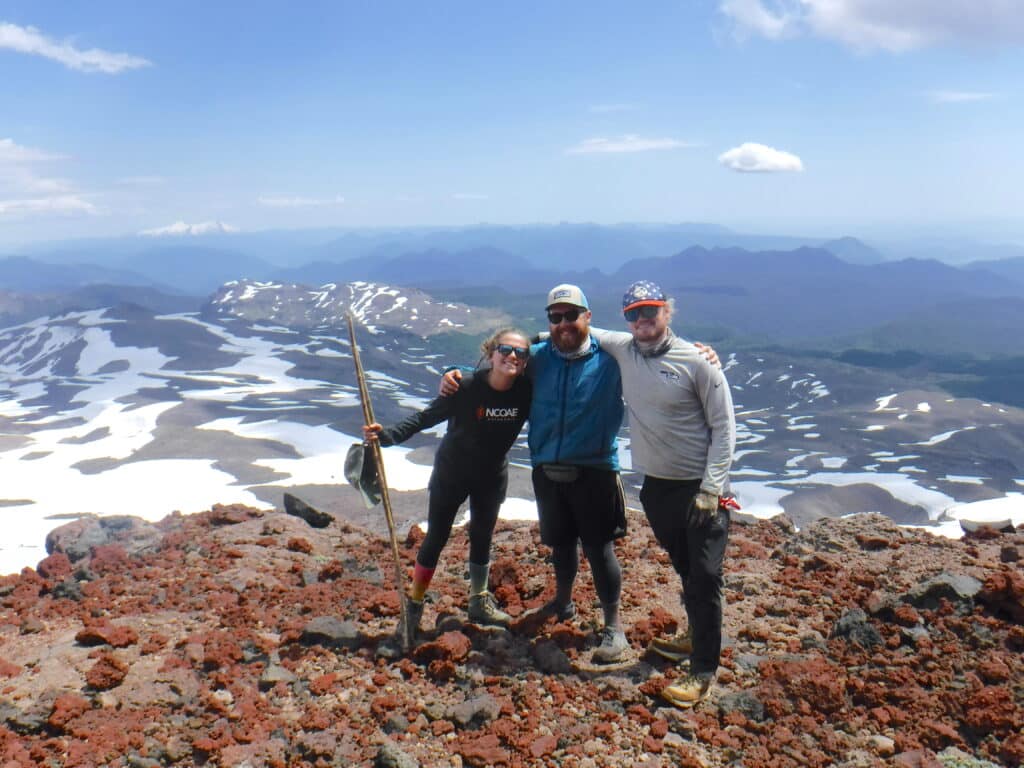
We can even help you pitch your trip as a benefit to your employer. Who knows? Adventure-based education may be the future for your organization’s workplace employee engagement. (more…)
Concussion Recognition and Treatment in the Backcountry
Wilderness Medicine TrainingConcussion recognition and treatment has gotten a lot of attention over the last decade, mostly in the context of youth and professional sports such as tackle football and soccer. It’s even a topic for those who serve in our armed forces. However, confusion over its prevention, diagnosis, and treatment remains widespread.
In an interview with a reporter from the Chicago Sun Times, former National Football League quarterback Brett Favre, who was knocked out cold only once in his 20-year career, claimed that “probably 90 percent” of the tackles he endured left him with a concussion.
He’s most likely correct in that estimation. After all, the definition of “concussion” is broad: “A concussion is a brain injury, a disturbance in brain function induced by traumatic forces, either from a direct blow to the head or a transmitted force from a blow to the body.” It disrupts brain function at the cellular metabolic level but does not result in major structural damage. Conventional MRI or CT scanning will not show evidence of a concussion.
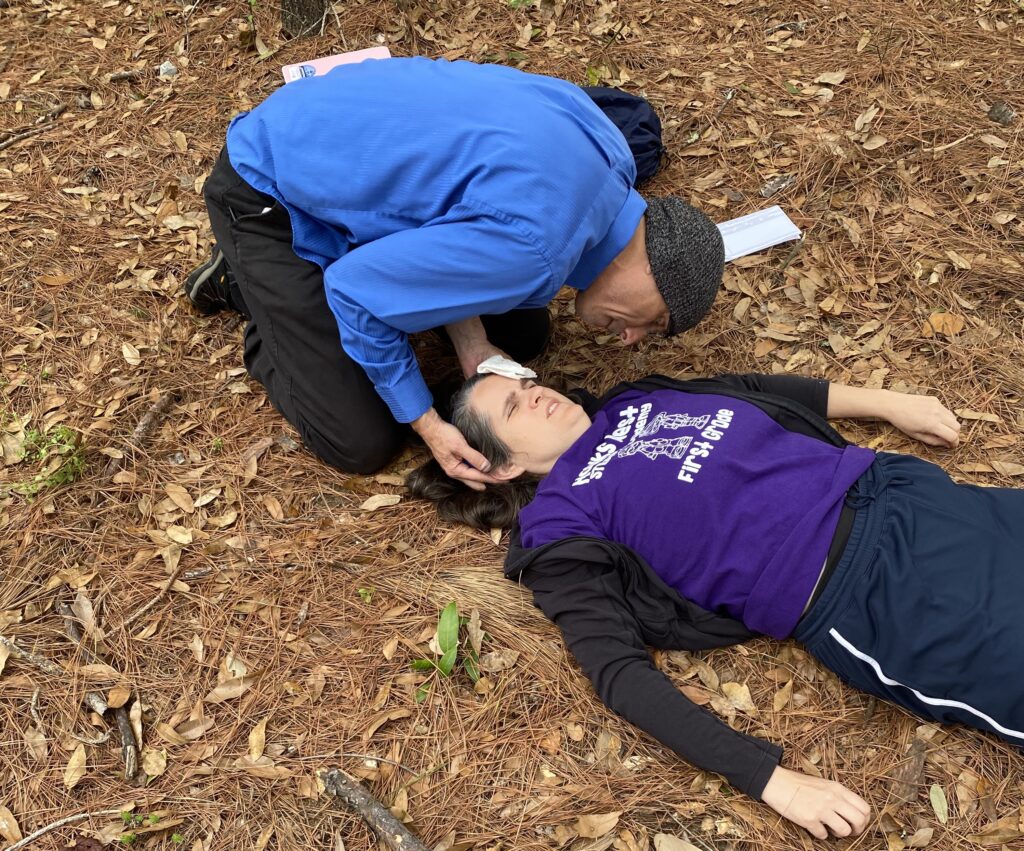
So, how do you know if you or someone else has suffered a concussion while in the backcountry? And, after having made that determination, what should be done? Having clear answers to these two questions is essential for successful recovery and to prevent long-term cognitive and psychological complications. This is true no matter where the concussion takes place, but especially in the backcountry where medical treatment from a full-time team is unavailable. (more…)
Avoiding Target Fixations and Incident Pits in the Backcountry
Risk Management“Look where you want to go!”
I have conveyed this message to wilderness course participants countless times, shouting, screaming, and using hand signals when necessary. Sometimes I’m yelling above the roar of a set of rapids or the sound of an adjacent waterfall.
“Look where you want to go!”
I emphatically issue the same advice while watching climbers rappelling down a cliff, or verbally guiding a student on a mountain bike through a sketchy section of trail. In each case, the point of my shouting is to get the students to stop looking at the obstacle.
“Look where you want to go” really translates as “Stop looking at the obstacle! Don’t fixate on the hazard!”
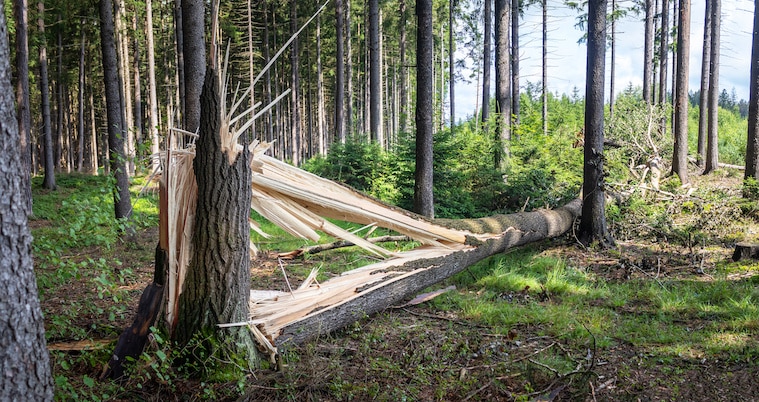
And it doesn’t matter if you’re a Wilderness First Responder approaching the scene of a backcountry incident, or a student on a wilderness course attempting to navigate a perceived hazard or obstacle, looking too closely at a hazard you want to avoid can be very dangerous.
At first glance — no pun intended — you might think it wise to actually look closely at the hazard you want to avoid. No argument there. You absolutely need to identify obstacles, especially in the backcountry and other places considered Wilderness. In fact, identifying an obstacle is a key factor in remaining safe.
But here’s the thing: (more…)
Most EMS Terminology Comes Down to Initials, Abbreviations and Acronyms
EMT TrainingA few years ago, we ran a three-part series on slogans, slang, and terminology as it applies to a trio of human-powered outdoor recreational activities. If you recall, we started out with some “gnarly” surfing terms, then we “tied in” to a conversation about climbing, finally pulling a “wet exit” on the language of paddling.
You can review these three articles using the links below:
- From Sept. 20, 2020: Surfing Terminology and Slang: You Can’t Play BINGO Without the Lingo
- From Oct. 10, 2020: On Belay — Climbing Terminology and Slang
- From Oct. 30, 2020: Paddling Terminology and Slang: Nobody Says ‘Up a River Without an Oar’
There was quite a bit of word whimsy in those articles, and we made sure to remind readers that successfully lassoing the linguistics of a particular activity was no guarantee you were mastering that particular sport professionally.
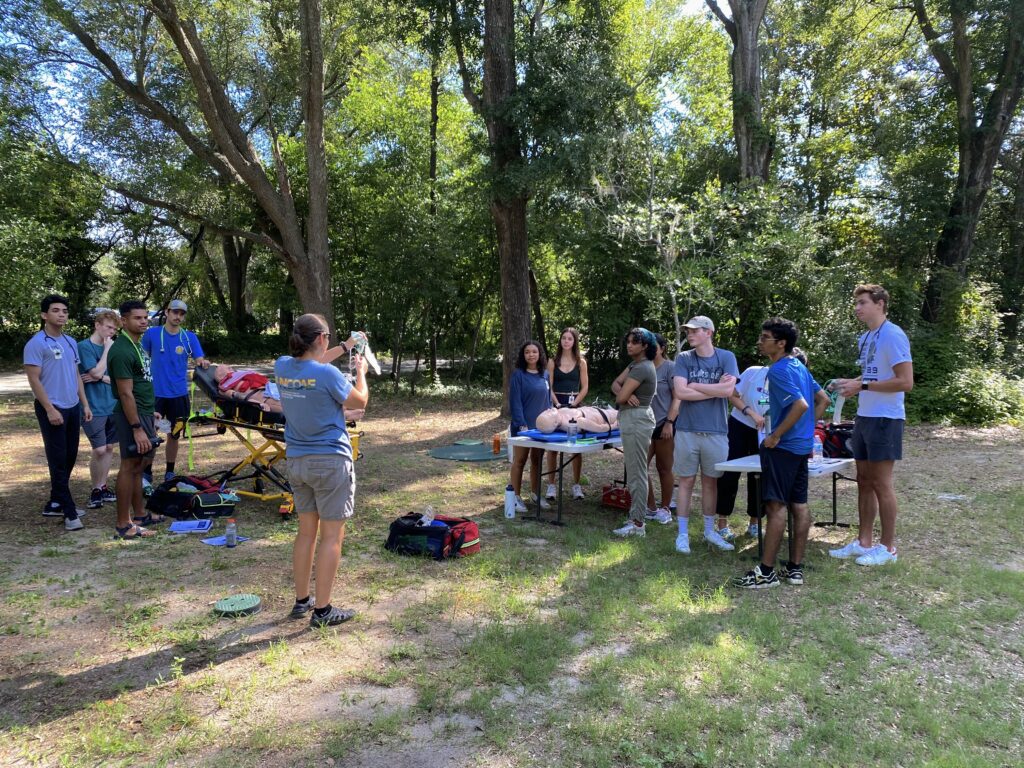
Today we’re taking a more serious look at language, this time highlighting the terminology used by members of the Emergency Medical Service (EMS) community. That’s because one of our areas of focus here at The National Center for Outdoor & Adventure Education (NCOAE) is emergency medicine training and education. And whether you’re an EMS, medical professional, or wilderness first responder (WFR), these terms are most often employed when these professionals find themselves managing a medical emergency.
First off, you might notice that most of these terms come in the form of acronyms, abbreviations, and initials, and the reason for that is to enable first responders to quickly communicate and react with each other and the patient in the field.
The source for these acronyms comes from the NCOAE Wilderness Medicine Field Guide (ISBN 978-0-578-87449-4).
Here, we present them in alphabetical order: (more…)
When it Comes to Wilderness, Is it an Adventure or Experience?
Outdoor EducationYears ago, I was working in wilderness-based setting with a group of gang members who were attempting to break away from the often-violent lifestyle in which they found themselves. During a break our programming, I asked a loaded question.
“Anybody want to tell me about their tattoos and what they mean?”
The 30 or so gang members, hailing from a variety of organizations — MS-13, Bloods, Crips and Latin Kings — stared up at me. Hard. One participant in the back shouted, “Nobody gives a shit about our tattoos!”
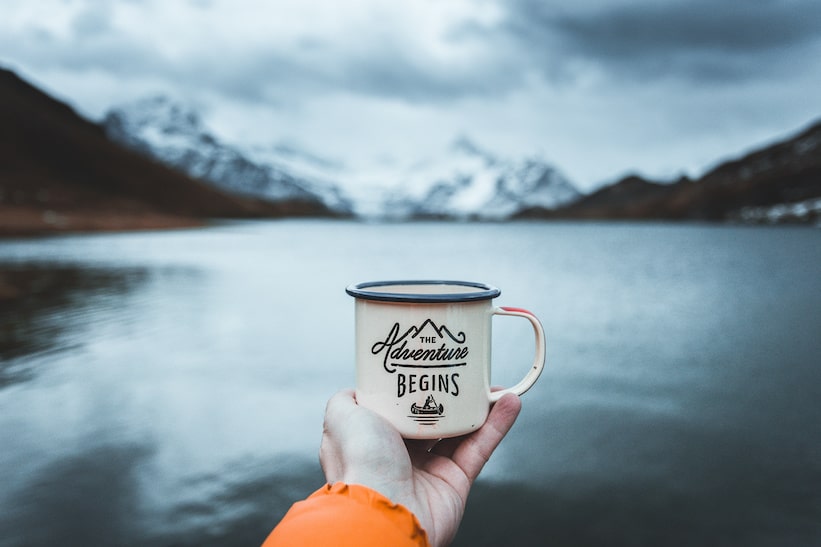
When I burst out laughing, I was met with even harder stares, I realized an explanation was in order. I told the participants that everyone wants to know about their tattoos. They’re just too afraid to broach the subject.
I said that if we were to put a person covered in tattoos from head to toe on a scale, and then somehow remove all that ink on their skin and weighed them again, the weight change would probably be undeterminable.
If, however, that same tattooed gang member walked into a job interview, the weight of those tattoos — what they represented — would be a thousand pounds. So again, I asked them to tell me the stories and histories behind their tattoos. What followed was an enlightening experience. The curtain was pulled back and these folks opened up and shared the significance behind their body art.
My point is this: Words and images have weight.
Words and Images Have Weight
I tell you this because a leading outdoor industry retailer — REI (Recreational Equipment, Inc.) — recently announced an adjustment to their marketing, based on patterns they say are cropping up in our culture today. REI’s announcement that the company is rebranding its tour business from REI Adventures to REI Experiences caught many people I know off guard, myself included.
It’s an effort, they say, to increase their participant base to three million clients a year. The company’s officers and administrators fear the word “Adventure” is getting in the way of its effort to grow the business.
So, what is it we think when a brand that builds a $3.7-billion-a-year business around catering to adventurers decides to change the word to experiences instead? Is adventure too heavy of a word? Is the term adventure dangerous? Are we — both consumers and outdoor community members — becoming soft?
What comes next? Will the (more…)
The Role of the Wilderness First Responder During Water Rescues
Wilderness Medicine TrainingIt may surprise you to learn that drownings — along with heart attacks and falls — are among the leading causes of death for those who venture into the wilderness for recreation or education in the United States.
Statistics show that there are nearly 4,000 fatal drownings each year in the United States, with a little more than 8,000 nonfatal drownings. These figures include boating-related drownings. In fact, the threat of drowning is so prevalent that the first edition of the NCOAE Wilderness Medicine Field Guide devotes an entire section to Environmental Submersion and Drowning Injury.
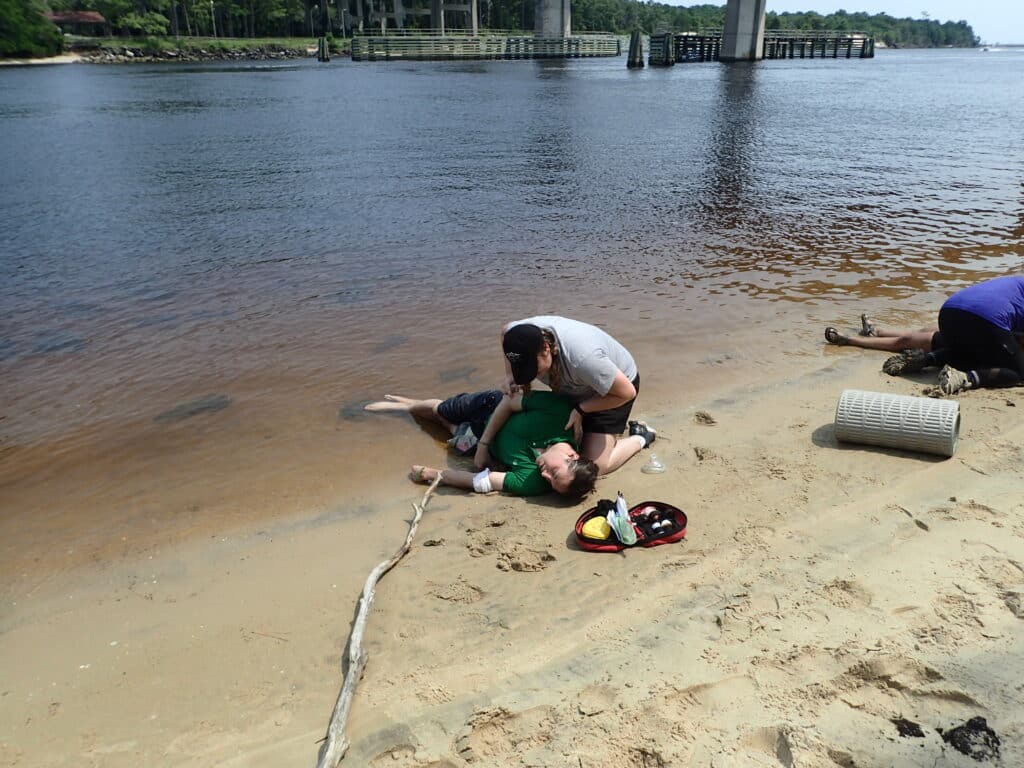
Of course, it’s during the spring and summer that most outdoor explorers are on the water, including those participating in backcountry expeditions. Lakes, rivers and streams provide much-needed relief in the backcountry on a hot August afternoon and are sought-after destinations for many outdoor enthusiasts.
For those training to become Wilderness First Responders (WFR) and those participating in Wilderness First Aid (WFA) training, a major consideration is assisting with medical emergencies that occur on or near the water. (more…)
Outdoor Industry Jobs Require Personal Experience and Certifications
Outdoor Educator TrainingProfessional development — learning that allows you to earn or maintain professional credentials — is key to career planning, especially when it comes to considering a career in the outdoor adventure and education industry. Much more than participating in a bunch of classes, our sector of the outdoor industry looks favorably on applicants with wilderness medicine training and certification, skills training and certification, and hands-on guiding and expedition leadership experience.
Truth is, we here at NCOAE found that operating an adventure education company during a health pandemic was challenging. And staffing our AEE-accredited organization with highly experienced instructors became increasingly difficult but not impossible.
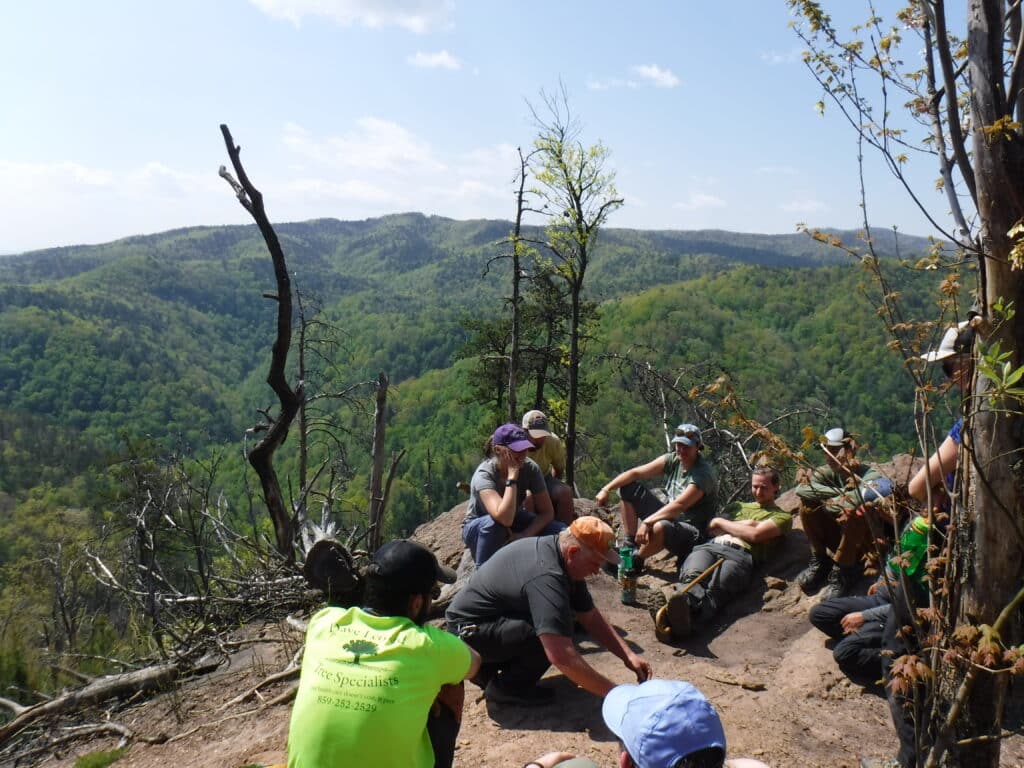
Like other industries, we suffered a staffing shortage, and yes, some of our existing staff left to pursue other pathways. But what we’ve noticed lately is a lack of experience from some people who thought working in the outdoors would — quite literally — be a walk in the park.
Many of these would-be outdoor educators and guides decided that sitting on a couch while looking at photos and films of wilderness expeditions was a suitable alternative for actually going out and experiencing the outdoors.
This potential pool of applicants backed out and went the way of the “Instagram Adventurer” or the “Armchair Explorer.” And in talking with our colleagues across our sector of the outdoor industry, we’re not alone in seeing this trend. Nearly all outdoor adventure and education organizations are taking pause and evaluating the future of trainings, staff recruitment, and what it means to be qualified to head out into “wild places.”
Regardless of what other organizations choose to do about their staffing challenges, NCOAE will not budge on what is required of our field instructor and outdoor educator candidates. Hands-on experience coupled with recognized industry certifications still matter and always will.
If you’re interested in a seasonal or full-time job in outdoor education, here are my recommendations on how to proceed. (more…)
Applying the Principles of ‘Leave No Trace’ to Daily Life in an Urban Setting
UncategorizedWhat is Leave No Trace?
The idea behind Leave No Trace is to embrace specific wilderness stewardship values in order to protect our backcountry areas for generations to come. Back in the early 1940s, Robert Baden-Powell, founder of the world Scouting movement, said, “Try and leave the world a little better than you found it.” Over time, this morphed into, “Always leave your campground cleaner than you found it.”
Fifty years later, in the early 1990s, that Leave No Trace concept was immortalized through an educational curriculum developed by the United States Forest Services in partnership with NOLS (the National Outdoor Leadership School). The outcome was an agreed framework for instilling awareness on the part of wilderness travelers to interact with nature in a manner that reduces human impact.
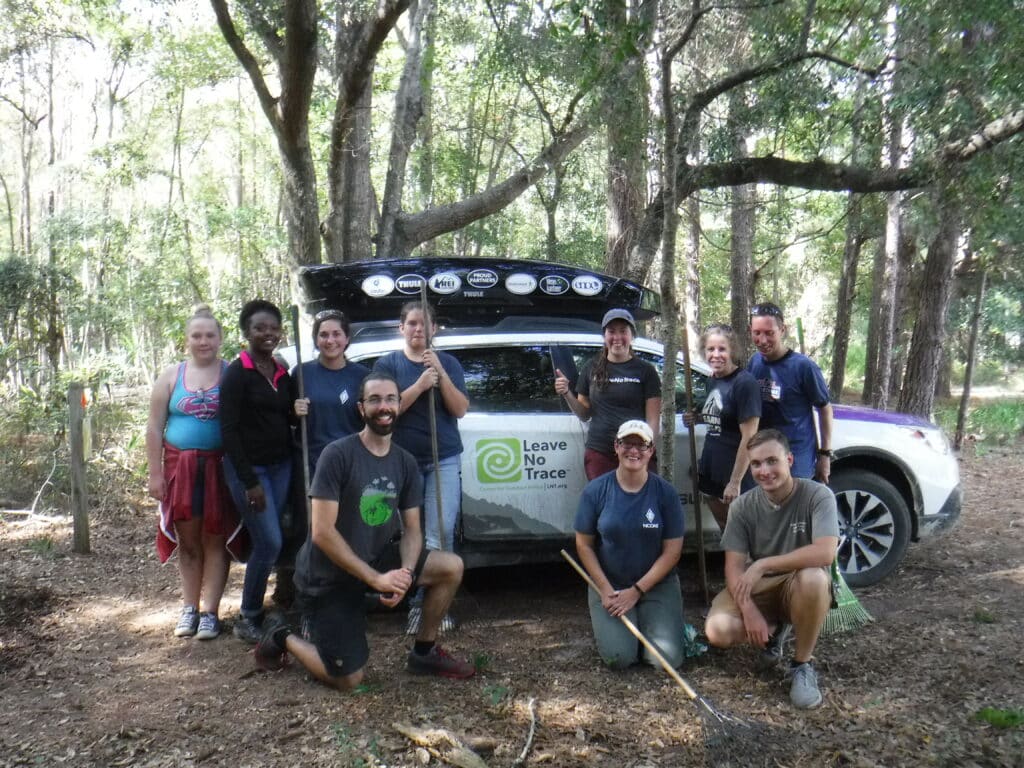
What is The Importance of Leave No Trace?
The idea behind Leave No Trace is to embrace specific wilderness stewardship values in order to protect our backcountry areas for generations to come. Today, that program — run by the Leave No Trace Center for Outdoor Ethics in Boulder, Colorado — impacts more than 15 million people in the United States and dozens of other countries with conservation initiatives, education, training, and research.
Baden-Powell’s simple sentiment more-or-less condenses the seven principles behind today’s Leave No Trace (LNT) program. The well-known LNT’s principles are: (more…)
TALK TO US
Have any further questions about our courses, what you’ll learn, or what else to expect? Contact us, we’re here to help!